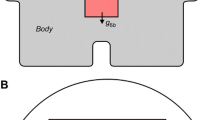Abstract
An automatic thermal control system is proposed for the treatment of cerebral injury and inflammation. The system is based on the reference model adaptive control method. It works adaptively according to the difference between individuals, and chronic change of the patient’s physiological state, and changes in the environmental conditions. Using the human thermal system of the Stolwijk-Hardy model, the brain temperature is dynamically related to the ambient temperature of the head, trunk, and extremities and their metabolic heat production. The dynamic characteristics of brain temperature under various physical conditions, as examined by simulation experiments, provide improved understanding of clinical brain cooling treatment, which simultaneously give good evidence for the validity of the model. The brain temperature is adaptively controlled in accordance with the appropriate physiological state suggested by various clinical experiences. This kind of adaptive control system is useful for the practical implementation of automatic hypothermia control in seriously injured or inflamed brain.
Similar content being viewed by others
References
Stolwijk JAJ, Hardy JD (1966) Temperature regulation in man - a theoretical study. Pflugers Arch 291:129–162
Hirayama H (1966) Application of linear system analysis for the human temperature regulation system. IEICE Tech Rep, MBE 97−101:59–66
Atkins AR, Wyndham CH (1969) A study of temperature regulation in human body. Pflugers Arch 3−7:104–119
Cornew RW, Houk JC (1967) Fine control in the human temperature regulation system. J Theor Biol 16:406–426
Fiala D, Lomas KJ, Stohrer M (1999) A computer model of human thermoregulation for a wide range of environmental conditions: the passive system. J Appl Physiol 87:1957–1972
Fay T (1943) Observation on generalized refrigeration in case of severe cerebral trauma. Assoc Res Nern Ment Proc 24:611–619
Arai T (1997) Brain resuscitation and hypothermia treatment (in Japanese). Shinko-koueki-isho Shuppanbu, Tokyo, pp 1–124
Dietrich WD (1992) The importance of brain temperature in cerebral injury. J Neurotraum 9(Suppl):475–485
Rosomoff HL, Holaday DA (1955) Cerebral blood flow and cerebral oxygen consumption during hypothermia. Am J Physiol 182:19–22
Wagner CL, Eicher DJ, Katikaneni LD (1999) The use of hypothermia: a role in the treatment of neonatal asphyxia? Pediatr Neurol 21:429–443
Mellergard P (1992) Changes in human intracerebral temperature in response to different methods of brain cooling. Neurosurgery 31:671–677
Hayashi N (1995) The cerebral hypothermia treatment (in Japanese). Igaku-shoin, Tokyo, pp 1–105
Westin B, Miller JA, Nyberg R (1959) Neonatal asphyxia pallida treated with hypothermia alone or with hypothermia and transfusion of oxygenated blood. Surgery 45:868–879
Miller JA, Miller FS, Westin B (1964) Hypothermia in the treatment of asphyxia neonatorum. Biol Neonat 6:148–163
Gunn AJ, Gluckman PD, Gunn TR (1998) Selective head cooling in newborn infants after perinatal asphyxia: a safety study. Pediatrics 102:885–892
Battin MR, Dezoete JA, Gunn TR (2001) Neurodevelopment outcome of infants treated with head cooling and mild hypothermia after perinatal asphyxia. Pediatrics 107:480–484
Clifton GL, Miller ER, Choi SC (2001) Lack of effect of induction of hypothermia after acute brain injury. N Engl J Med 344:556–563
Schubert A (1995) Side effects of mild hypothermia. J Neurosurg Anesthesiol 7:139–147
Landau ID, Tomitsuka M (1981) Theory and practice of adaptive control systems (in Japanese). Ohmusha, Tokyo, pp 1–200
Wakamatsu H, Gaohua L (2000) Analysis of transient cooling characteristics of the brain by using an electrical equivalent circuit (in Japanese). Biol Phys Eng Symp 2000, Nagoya, pp 333–336
Author information
Authors and Affiliations
Corresponding author
About this article
Cite this article
Wakamatsu, H., Gaohua, L. Adaptive control of brain temperature for brain hypothermia treatment using Stolwijk-Hardy model. Artif Life Robotics 8, 214–221 (2004). https://doi.org/10.1007/s10015-004-0310-z
Received:
Accepted:
Issue Date:
DOI: https://doi.org/10.1007/s10015-004-0310-z




